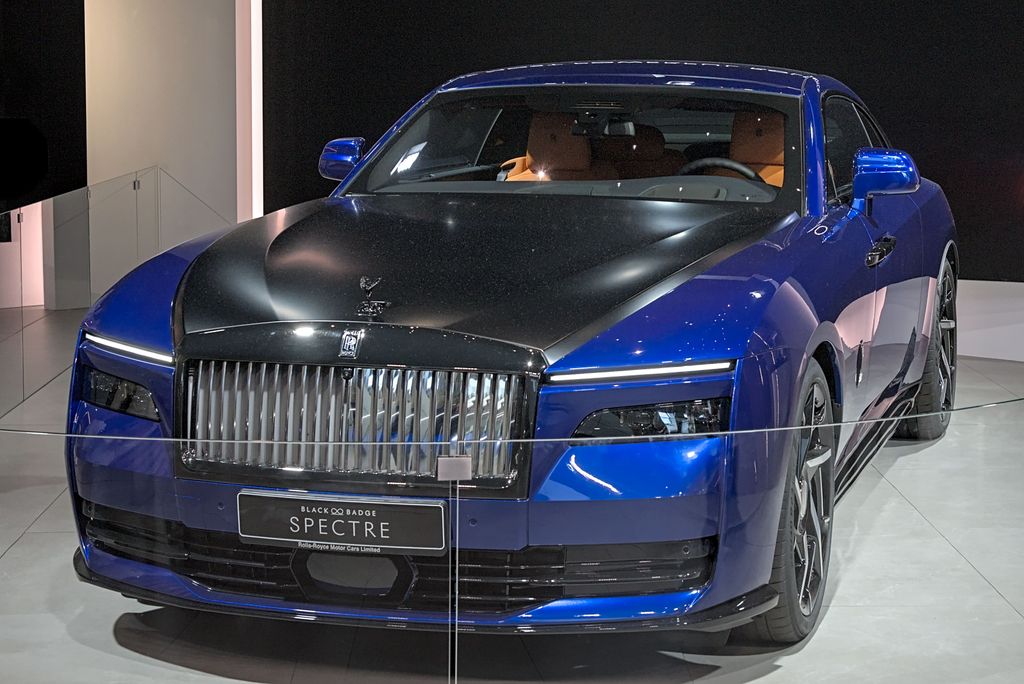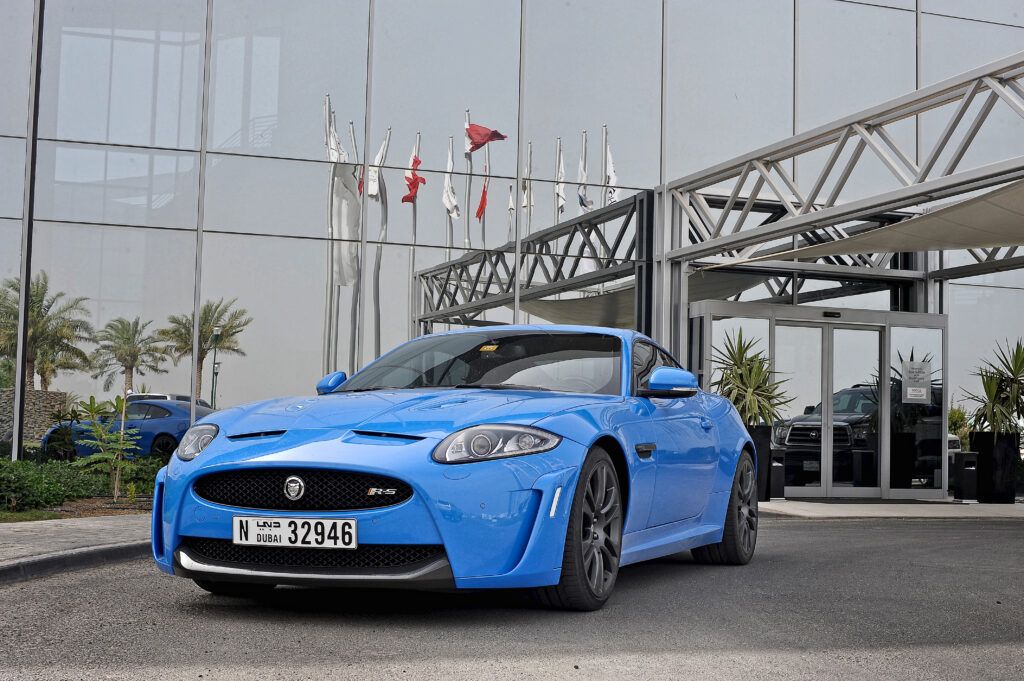
Alright, gearheads and budget-minded drivers, let’s talk turkey. You’re eyeing a new-to-you ride, maybe something that won’t require a second mortgage for repairs. You’ve scoured online forums, compared spec sheets, and probably even kicked a few tires. But let’s be real: who truly knows the guts and glory, the triumphs and tragedies, of a car better than the folks who spend their days elbow-deep in oil and coolant? We’re talking about the mechanics, the unsung heroes who see your car at its best—and its absolute worst.
They’re the ones who’ve witnessed which models sail past 200,000 miles with little more than oil changes, and which ones become regular fixtures in the bay, bleeding wallets dry. While glossy marketing, low prices, or a slick design might sway the casual buyer, a mechanic’s experience cuts through all the noise. They reveal what truly matters: long-term reliability, the actual cost of ownership, and how well a vehicle holds up once the odometer starts piling on the miles, mile after glorious mile.
So, prepare to peel back the curtain. We’ve tapped into the collective wisdom of seasoned professionals to bring you an insider’s guide. This isn’t just about what *looks* good; it’s about what *is* good. We’re about to delve into the rides that earn a mechanic’s nod of approval, the ones they’d happily recommend to their own families. These are the vehicles that promise more road ahead and fewer headaches under the hood. Let’s get into it, because knowing what these pros secretly think can save you a whole lot of green in the long run.
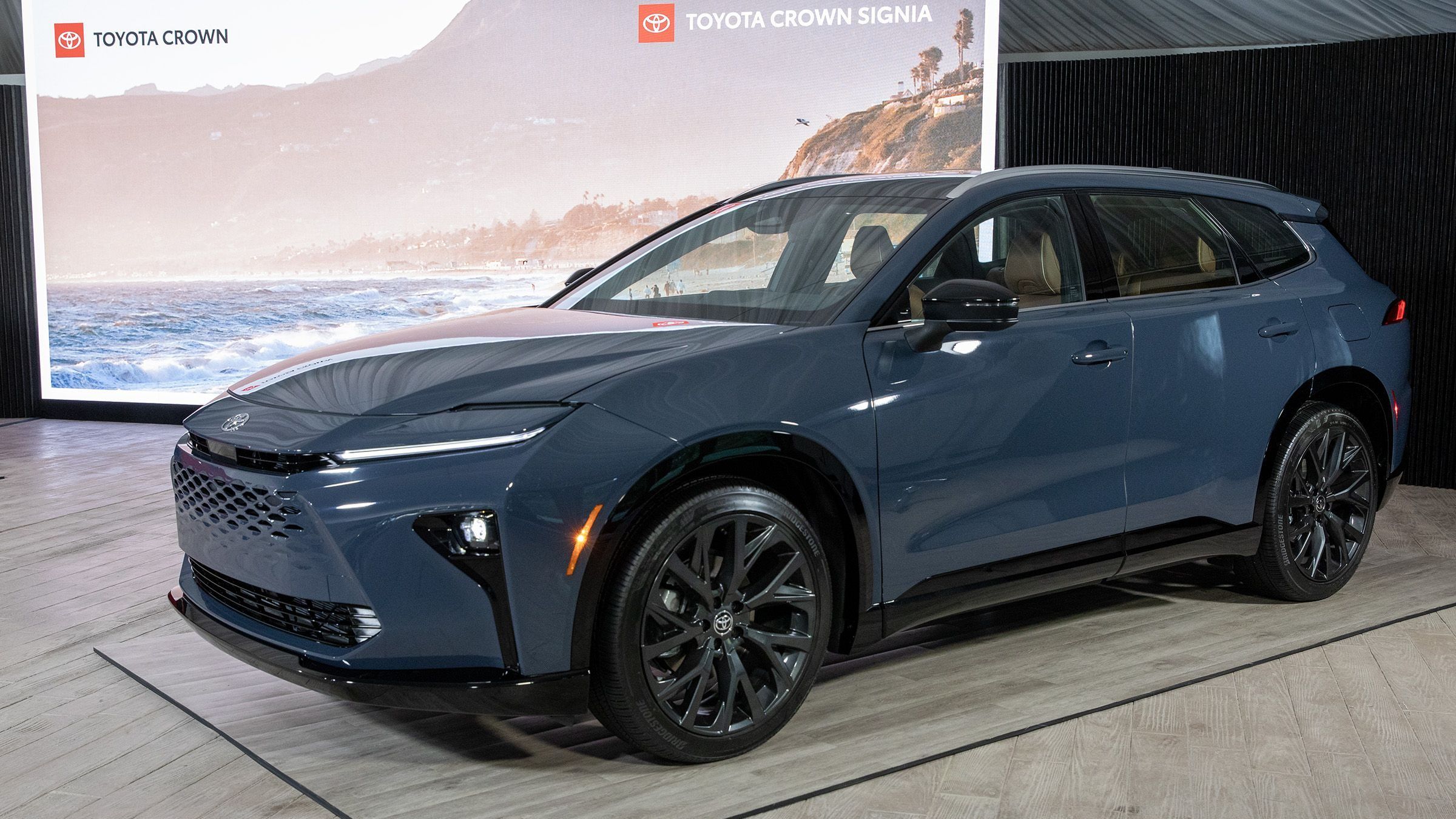
1. **Toyota Camry: The Undisputed Workhorse**If there’s one car that consistently puts a smile on a mechanic’s face—because it rarely requires their services for anything catastrophic—it’s the Toyota Camry. This isn’t just America’s best-selling car for the last 20 years by accident; it’s a testament to unwavering dependability. Todd Bialaszewski, founder of Junk Car Medics, a Certified Master Mechanic and ASE Master Technician, summed it up perfectly: “If you’re in the market for a new car, think Toyota Camry. It’s a solid bet.” He’s seen loads of them, describing them as “the trusty workhorse of cars — good on gas, don’t break down much, and they don’t drop in value like a rock.”
The 2012–2017 generation, in particular, combines time-tested engineering and accessible maintenance. Its standout engine is the 2.5L four-cylinder (2AR-FE), renowned for its simplicity, longevity, and efficiency. This is a chain-driven engine that rarely suffers from internal issues, and when paired with the conventional 6-speed automatic transmission, the powertrain is nearly bulletproof. Even the available 3.5L V6 is a strong performer with excellent reliability, mirroring the engine found in the more luxurious Lexus ES 350.
Mechanics love the Camry because it checks every box a professional looks for in a used car: affordable parts, ease of repair, few major recalls, and a proven history of surviving well past 200,000 miles. Think about it – brake jobs, suspension work, and timing chain tension are relatively simple tasks on these vehicles. Even high-mileage Camrys retain good drivability, which speaks volumes about their inherent quality. It’s the kind of car that just *works*.
Beyond the engine bay, the Camry also delivers an excellent ownership experience. Its interiors are spiced with luxury and space, offering comfort for daily commutes and longer journeys alike. Fuel economy tests consistently show the entire Camry lineup performing extremely well. Plus, Toyota’s touchscreen infotainment system—called Entune 3.0—is standard across the lineup, with an enhanced version available as an option, making for a user-friendly cabin experience. It’s a comfortable, low-drama sedan that mechanics consistently recommend for its ability to go the distance without draining your wallet.
Car Model Information: 2015 Toyota Camry SE
Name: Toyota Camry
Caption: 2018 Toyota Camry Ascent (ASV70, Australia)
Manufacturer: Toyota
Production: March 1982 – present
Aka: ubl
Class: ubl
Layout: ubl
Predecessor: ubl
Successor: Toyota Avensis (T250)
Categories: 1990s cars, 2000s cars, 2010s cars, 2020s cars, All-wheel-drive vehicles
Summary: The Toyota Camry (; Japanese: トヨタ・カムリ Toyota Kamuri) is an automobile sold internationally by the Japanese auto manufacturer Toyota since 1982, spanning multiple generations. Originally compact in size (narrow-body), the Camry has grown since the 1990s to fit the mid-size classification (wide-body)—although the two widths co-existed in that decade. Since the release of the wide-bodied versions, Camry has been extolled by Toyota as the firm’s second “world car” after the Corolla. As of 2022, the Camry is positioned above the Corolla and below the Avalon or Crown in several markets.
In Japan, the Camry was once exclusive to Toyota Corolla Store retail dealerships. Narrow-body cars also spawned a rebadged sibling in Japan, the Toyota Vista (トヨタ・ビスタ)—also introduced in 1982 and sold at Toyota Vista Store locations. Diesel fuel versions have previously retailed at Toyota Diesel Store. The Vista Ardeo was a wagon version of the Vista V50.
Get more information about: Toyota Camry
Buying a high-performing used car >>>
Brand: Toyota Model: Camry
Price: $11,985 Mileage: 120,137 mi.
Read more about: First to the Finish or Built for the Long Haul? An Expert’s Deep Dive into 12 Cars Defining Automotive Durability
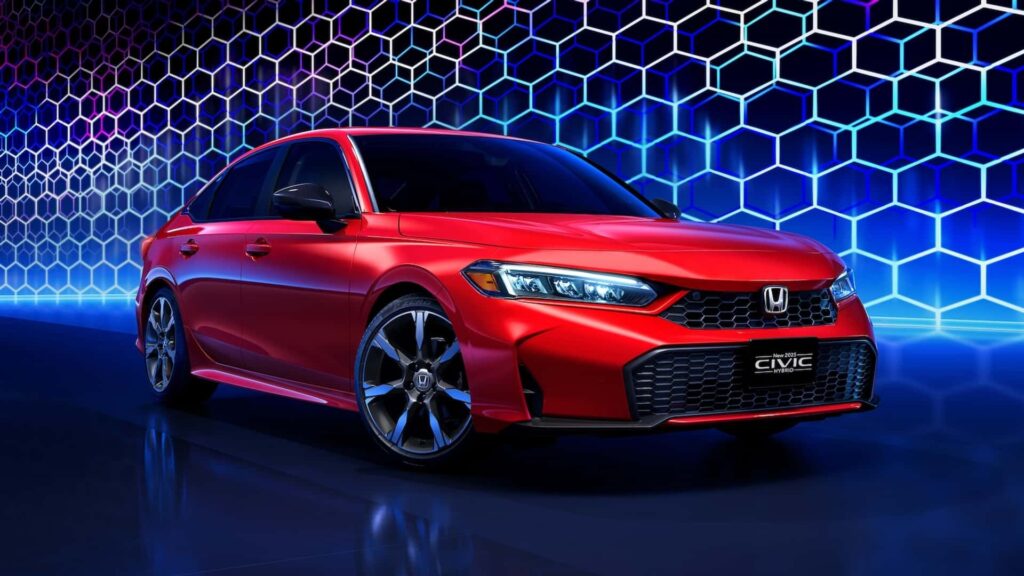
2. **Honda Civic: The Enthusiast’s Reliable Companion**Few used cars inspire as much long-term confidence as the Honda Civic, especially models from 2012 to 2019. This generation is a mechanic’s favorite, combining bulletproof reliability with good fuel economy and solid resale value. It’s the practical pick for anyone wanting dependable transportation without the constant worry of repairs, and it even throws in a dash of fun behind the wheel. The Honda Civic is a terrific model that truly reeks of performance, fuel efficiency, and interior design.
Under the hood, the 1.8L i-VTEC engine, used in many trims from 2012–2015, is widely regarded as one of Honda’s most durable. Later models, including the 2.0L non-turbo engine in the base 2016–2019 Civics, also prove to be tough, low-maintenance powerplants. Honda’s engineering philosophy favors simplicity and ease of access, which translates directly to easier and cheaper service for mechanics. The inclusion of timing chains instead of belts, long-lasting brakes, and strong cooling systems all contribute to the Civic’s remarkably long road life.
Mechanics appreciate that even higher-mileage examples, often well over 150,000 miles, rarely need major work. The acceleration force produced by the Civic outdoes other vehicles in its category, providing a lively driving experience. Not only is this car relatively fast, but it also comes with responsive handling and stability, balancing well in corners—though it might make a bit of road noise under hard acceleration. The Civic, from a mechanic’s perspective, is one of those cars you buy and pretty much forget about, because it just keeps going and going.
Inside, the Civic’s interior design is impressive. Controls are within easy reach and are intuitive to use, minimizing driver distraction. Cabin space is quite generous, meaning tall individuals will have no problem getting comfortable in the front seats. While the CVT automatic introduced in later years can be a weak spot if neglected, it’s generally trouble-free when serviced on schedule. Manual transmission models are even more reliable, further solidifying the Civic’s reputation. For those wanting something with a little style, a lot of substance, and a minimal repair record, the Civic is a smart buy every single time.
Car Model Information: 2019 Honda Civic Sport
Caption: 2024 Honda Civic liftback
Manufacturer: Honda
Aka: ubl
Production: 1972–present
Class: Subcompact car
BodyStyle: fastback,Sedan (automobile)
Layout: Front-engine, front-wheel-drive layout,Front-engine, four-wheel-drive layout
Predecessor: Honda N600,Honda Z600
Categories: 1980s cars, 1990s cars, 2000s cars, 2010s cars, 2020s cars
Summary: The Honda Civic (Japanese: ホンダ・シビック, Hepburn: Honda Shibikku) is a series of automobiles manufactured by Honda since 1972. As of 2023, the Civic is positioned between the Honda Fit/City and Honda Accord in Honda’s global passenger car line-up. It is one of the best-selling automobiles in history, with over 27 million units sold through 2021.
The first-generation Civic was introduced in July 1972 as a two-door fastback sedan, followed by a three-door hatchback that September. With a 1,169 cc transverse engine and front-wheel drive, the car provided good interior space despite its small overall dimensions. Initially gaining a reputation for being fuel-efficient, reliable and environmentally friendly, later iterations have become known for performance and sportiness, especially the Civic Si, SiR, and Type R versions. It is currently in its eleventh generation, which has been produced since 2021.
The Civic has often been rebadged for international markets, and it served as the basis for the Honda CR-X, the Honda CR-X del Sol, the Concerto, the first generation Prelude, the Civic Shuttle (which later became the Orthia) and the CR-V (which in turn was used as the basis for the Honda FR-V).
Get more information about: Honda Civic
Buying a high-performing used car >>>
Brand: Honda Model: Civic
Price: $18,499 Mileage: 57,367 mi.

3. **Lexus ES 350: Luxury Without the Liabilities**If your heart desires a used car that whispers luxury while shouting reliability, mechanics will often point you towards the Lexus ES 350, particularly the 2007–2015 generation. It’s a delightful paradox: underneath its upscale badge and plush cabin lies the rock-solid heart of a Toyota Camry. This combination delivers a refined driving experience that doesn’t sacrifice dependability, making it one of the most mechanic-approved luxury choices out there. Imagine getting a mix of luxury and reliability in one car, and that’s precisely what the ES 350 offers.
The ES 350 proudly features Toyota’s proven 3.5L V6 engine (2GR-FE), which is consistently regarded as one of the most respected V6s in the entire automotive business. This powerplant is known for its silky-smooth performance, quiet operation, and astounding long-term durability. It’s an engine that can routinely hit 250,000–300,000 miles with only basic, diligent maintenance. Complementing this robust engine is the equally dependable 6-speed automatic transmission from these years, which shifts cleanly and rarely fails when serviced on time.
Mechanics absolutely adore the ES 350 because, at its core, it’s a luxury Camry—which means it’s easy to work on and significantly cheaper to maintain compared to its German luxury rivals. It rarely darkens the doors of the repair shop for anything major, saving owners significant headaches and costs. Owners, in turn, benefit from a supremely comfortable, quiet ride, top-tier build quality that stands the test of time, and long-lasting components throughout the vehicle. It’s a testament to the engineering prowess of Lexus, a luxury division of Toyota, sharing body parts, powertrains, and platforms that ensure similar reliability.
This isn’t a car that screams excitement from the rooftops, but it excels in delivering long-term value. The leather interiors hold up remarkably well, electronics prove to be steadfastly reliable, and the car maintains its dream-like ride quality even after accumulating well over 100,000 miles. As one mechanic often notes, the ES 350 is the car they would confidently tell their own family members to buy—and they often do. It’s the premium vehicle experience without the usual premium repair bill nightmares.
Car Model Information: 2023 Nissan Rogue SV
Name: Lexus ES
Caption: Lexus ES 350 (GSZ10)
Manufacturer: Toyota
Aka: unbulleted list
Production: June 1989 – present
Class: unbulleted list
BodyStyle: unbulleted list
Layout: unbulleted list
ModelYears: 1990–present
Categories: 1990s cars, 2000s cars, 2010s cars, 2020s cars, All-wheel-drive vehicles
Summary: The Lexus ES is a mid-size luxury sedan marketed since 1989 by Lexus, the luxury division of Toyota, across multiple generations, each offering V6 engines and a front-engine, front-wheel-drive layout. The first five generations of the ES used the Toyota Camry platform, while the latter generations are more closely related to both the Camry and the Avalon. Manual transmissions were offered until 1993, a lower-displacement inline-four engine became an option in Asian markets in 2010, and a gasoline-electric hybrid version was introduced in 2012. The ES was Lexus’s only front-wheel drive vehicle until 1998, when the related RX was introduced, and the sedan occupied the entry-level luxury car segment of the Lexus lineup in North America and other regions until the debut of the IS in 1999. The ES name stands for “Executive Sedan”. However, some Lexus importers use the name, “Elegant Sedan”.
Introduced in 1989, the first generation ES 250 was one of two vehicles in Lexus’s debut range, along with the LS 400. The second generation ES 300 debuted in 1991, followed by the third generation ES 300 in 1996, and the fourth generation ES 300/330 in 2001. The first- through fourth generation sedans shared body styling elements with Japan-market Toyota sedans, and a domestic market equivalent, the Toyota Windom (Japanese: トヨタ・ウィンダム, Toyota Windamu), was sold until the launch of the fifth generation ES in 2006. The word “Windom” is a combination of “win” and the suffix “dom” expresses a state of perpetual victory. The fifth generation ES used body styling marketed by Lexus as L-finesse and debuted in early 2006 as a 2007 model. The sixth generation ES debuted in the first half of 2012 as a 2013 model, and features increased cabin dimensions due to a longer wheelbase which is shared with the full-size XX40 series Avalon.
Lexus has positioned the ES in the comfort luxury segment, with an emphasis on interior amenities, quietness, and ride quality, in contrast with more firm-riding sport sedans. Buyers seeking more performance-focused models are targeted by the Lexus IS and rival makes, with such models offering a sportier drive with differently tuned suspensions. In Europe, Japan and other markets where it was not available until the seventh generation model, the GS sport sedans occupy the mid-size category in the Lexus lineup until it was cancelled August 2020. In the United States, the ES has been the best-selling Lexus sedan for over fifteen years.
Get more information about: Lexus ES
Buying a high-performing used car >>>
Brand: Lexus Model: ES 350
Price: $21,998 Mileage: 47,048 mi.
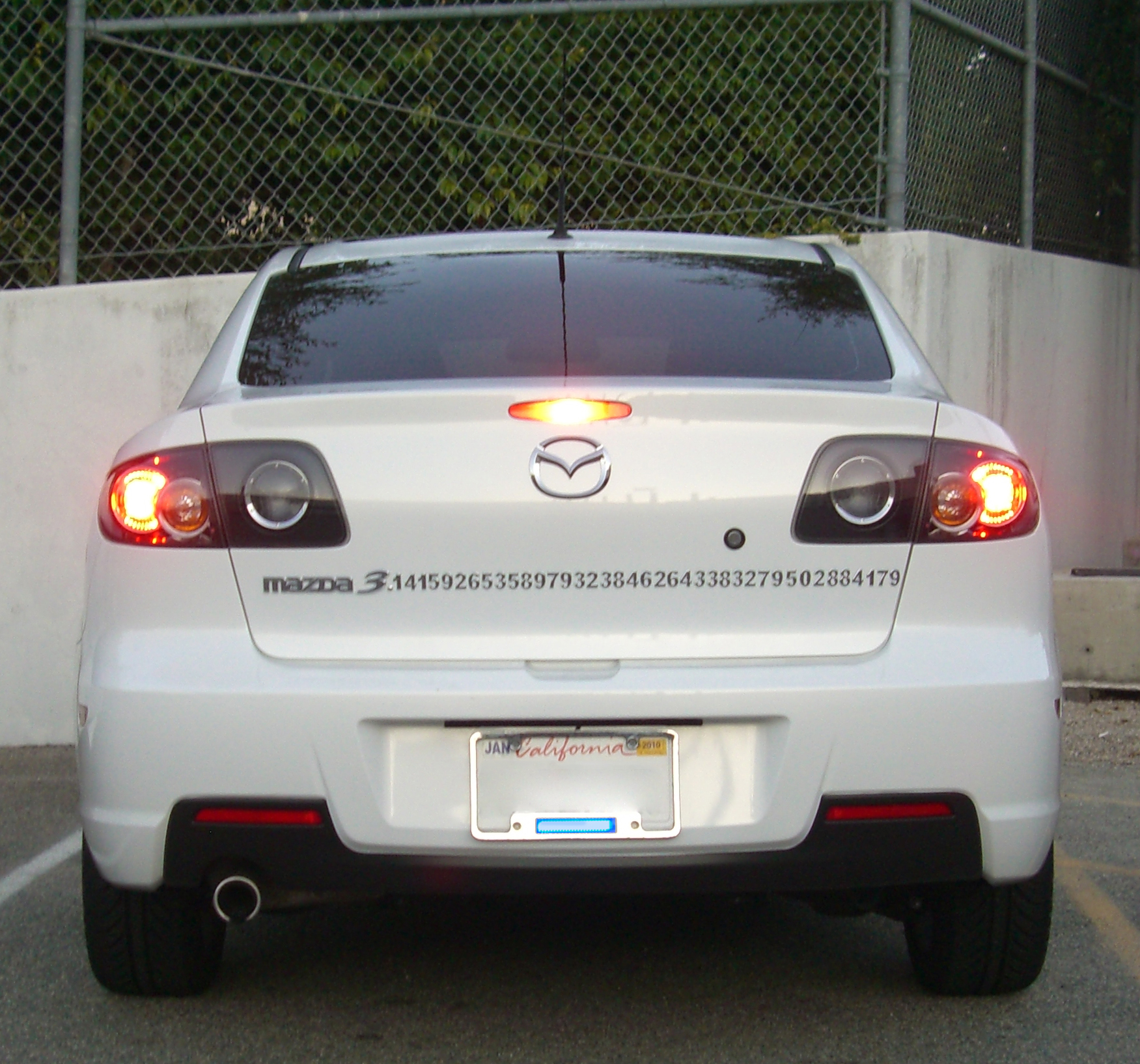
4. **Mazda3: The Zoom-Zoom You Can Trust**The Mazda3 isn’t just a darling among driving enthusiasts who crave a spirited ride; it has also cemented its reputation among mechanics as one of the most reliable and low-maintenance compact cars of the past decade. The 2014–2018 generation, in particular, hits a sweet spot, harmoniously blending engaging performance, modern styling, and an almost bulletproof long-term dependability. This combination makes it an excellent used car choice for those who believe that driving should still be a joy, even on a budget.
Underneath its stylish skin, the Mazda3 is powered by Mazda’s SKYACTIV 2.0L or 2.5L four-cylinder engines. These powerplants don’t just deliver impressive fuel economy, often reaching up to 40 mpg highway in certain trims; they also maintain a responsive and distinctly sporty feel. Paired with Mazda’s well-tuned automatic and manual transmissions, these engines are surprisingly robust. Mechanics particularly appreciate the relative lack of turbocharging and overly complex technology, which keeps things elegantly simple without sacrificing performance or efficiency. It’s that sweet spot between enjoyment and dependability.
What truly sets the Mazda3 apart, and why it features prominently on a mechanic’s recommended list, is its ability to prove that you don’t need to sacrifice fun to get reliability. It’s a car that mechanics rarely see for major, wallet-draining issues. Routine maintenance, such as oil changes, brake pads, and filter replacements, is straightforward and inexpensive, and the engine bay is designed for accessibility, making basic services a breeze. Even at higher mileages, these cars often drive tight and solid, a strong testament to Mazda’s commitment to build quality.
The interior materials age gracefully, the infotainment systems are intuitive and easy to use, and body rust is minimal, a marked improvement over earlier Mazda models. For city driving, highway commuting, or even as a first car that genuinely doesn’t feel basic, the Mazda3 stands out in a crowded segment. Mechanics often recommend it to buyers who want a reliable, efficient, and genuinely enjoyable daily driver—a car that expertly avoids the dreaded “boring zone” while offering dependable transportation that consistently puts a smile on your face.
Car Model Information: 2025 Mazda Mazda3 FWD w/Select Package
Name: Mazda3
Manufacturer: Mazda
Aka: Mazda Axela (Japan and China, 2003–2019)
Production: 2003–present
Class: Compact car
BodyStyle: Sedan (automobile),hatchback
Layout: Front-engine, front-wheel-drive layout,Front-engine, four-wheel-drive layout
Predecessor: Mazda Familia
Categories: 2010s cars, 2020s cars, All Wikipedia articles written in British English, All articles needing rewrite, All articles with dead external links
Summary: The Mazda3 (known as the Mazda Axela (Japanese: マツダ・アクセラ, Hepburn: Matsuda Akusera) in China and Japan (first three generations until 2019), a combination of “accelerate” and “excellent”) is a compact car manufactured by Mazda, available as a 5-door hatchback and 4-door sedan across all generations. It was first introduced in 2003 as a 2004 model, replacing the Familia/323/Protegé in the C-segment.
The second-generation Mazda3 for the 2009 model year was unveiled in late 2008, with the sedan premiering at the Los Angeles Auto Show and the hatchback at the Bologna Motor Show. For the 2012 model year, Mazda began offering the Mazda3 with their newly developed Skyactiv technology, including a more rigid body, a new direct-injection engine, and a new 6-speed transmission.
The third generation was introduced in mid-2013 as a 2014 model year. The third-generation model is the first Mazda3 to adopt the “Kodo” design language and a more complete Skyactiv range of technologies and the first to be made by Mazda independently.
The fourth-generation Mazda3 for the 2019 model year was unveiled in November 2018 at the Los Angeles Auto Show. For the 2019 model, the all-new Mazda3 is equipped with the updated Skyactiv technologies, including a spark-controlled compression ignition engine marketed as the Skyactiv-X.
A performance-oriented version of the Mazda3 was marketed until 2013 as the Mazdaspeed3 in North America, Mazdaspeed Axela in Japan, and the Mazda3 MPS in Europe and Australia.
The Mazda3 became one of Mazda’s fastest-selling vehicles, with cumulative sales in January 2019 of over 6 million units.
Get more information about: Mazda3
Buying a high-performing used car >>>
Brand: Mazda Model: Mazda3
Price: $25,000 Mileage: 2,434 mi.

5. **Honda Accord: The Mid-Size Masterpiece**The Honda Accord, particularly the 2022 model, stands as a testament to automotive excellence, often considered a world-class leader and a true full package. While some sedans in its crowded category might outshine the Accord in specific niche areas, few—if any—manage to bring all the essential qualities together as seamlessly and effectively as the Accord. It’s a vehicle that embodies the very essence of what makes Honda a brand religiously known for reliability over the years, truly making its mark in the automobile industry.
Its engine performance and fuel efficiency are consistently impressive. Tests have shown the Accord moving from 0 to 60 mph in a swift 8 seconds, while maintaining an average fuel economy of 23 mpg for both city and highway driving—a commendable balance of power and parsimony. This blend of performance and efficiency underscores why Honda vehicles are known to effortlessly run over 100,000 miles, with some outstanding models even veering toward the 200,000-mile mark. Edmunds, for instance, gives the Honda Accord an 8.3 out of 10 rating for its reliability, further solidifying its top-tier status.
Honda is also among the leading manufacturers recognized for the lowest frequency in engine checks and repairs. Imagine driving over 100,000 miles without the constant worry of frequent major car repairs—that’s the peace of mind an Accord owner often enjoys. While any car remains a liability to some extent, no matter how carefully it’s handled, choosing a Honda model like the Accord certainly gives you a greater chance to save a few dollars on maintenance and unexpected fixes.
Mechanics consistently place Honda high on their list of recommended car brands. They know that when a car arrives in the bay, if it’s an Accord, it’s likely for routine service rather than a catastrophic failure. This brand’s superb reliability ratings and its position as the fourth best-seller according to USA Today speak volumes. The Accord delivers on its promise of quality, making it a stellar recommendation for anyone seeking a mid-size sedan that truly combines robust performance, impressive fuel efficiency, and enduring dependability.
Car Model Information: 2010 Honda Accord EX
Name: Honda Accord
Caption: 2023 Honda Accord LX (US)
Alt: Front three-quarter view of a front-engined four-door car.
Manufacturer: Honda
Production: 1976–present
Class: Compact car
BodyStyle: hatchback
Layout: Front-engine, front-wheel-drive layout
Predecessor: Honda 1300
Categories: 1980s cars, 1990s cars, 2000s cars, 2010s cars, 2020s cars
Summary: The Honda Accord (Japanese: ホンダ・アコード, Hepburn: Honda Akōdo; ), also known as the Honda Inspire (Japanese: ホンダ・インスパイア, Hepburn: Honda Insupaia) in Japan and China for certain generations, is a series of automobiles manufactured by Honda since 1976, best known for its four-door sedan variant, which has been one of the best-selling cars in the United States since 1989. The Accord nameplate has been applied to a variety of vehicles worldwide, including coupes, station wagons, hatchbacks and a Honda Crosstour crossover.
Get more information about: Honda Accord
Buying a high-performing used car >>>
Brand: Honda Model: Accord
Price: $7,998 Mileage: 173,327 mi.
Read more about: Top New and Used Cars for Teens: Safety and Affordability Without Breaking the Bank

6. **Ford F-150: America’s Unshakeable Workhorse**Now, hold your horses for a moment, because the best vehicle money can buy, according to many mechanics, isn’t always a car at all. It’s America’s undisputed vehicle of choice, without any close second: the Ford F-150. Andy Saari, founder of Nextedge Technician and a 30-year industry veteran, puts it plainly: “It didn’t become the best-selling truck for 46 years straight by accident.” This statement alone is a mic drop in the world of automotive reliability, showcasing why even when talking about affordable sedans, a mechanic’s perspective might throw a curveball like a full-size pickup.
The F-150’s enduring reign is built on a foundation of solid engineering and practical design. It offers a wide variety of reliable powertrain options, catering to diverse needs and preferences. Saari specifically praises the V-6 Ecoboost, noting that it “has plenty of power for towing,” which is a crucial factor for a truck. This robust engine capability, combined with overall durability, makes it a favored choice for professionals and everyday users alike who need a vehicle that can truly perform under pressure.
One of the most significant advantages of the F-150, from a mechanic’s viewpoint, is the sheer availability of parts. Due to the massive volume produced and sold over decades, if you ever do encounter a problem, “parts are readily available,” Saari confirms. This isn’t just a minor convenience; it’s a critical factor that dramatically reduces repair times and costs, making ownership far less stressful and more economical in the long run. Contrast this with vehicles where specific components are scarce or expensive, and the F-150’s appeal becomes even clearer.
While it might not fit the conventional definition of an “affordable sedan,” its inclusion here reflects a crucial mechanic’s insight: true value and affordability in the long run often come from reliability and ease of maintenance, regardless of body type. The F-150 represents a vehicle that delivers on its promises, built to endure, and backed by a readily available support system—making it a top pick for anyone seeking a dependable, powerful, and easily maintainable workhorse that won’t constantly demand a trip to the shop for exotic, hard-to-find parts. It’s truly a testament to functionality over flash, and mechanics respect that.
Alright, gearheads and budget-minded drivers, you’ve just cruised through the mechanic-approved hall of fame, a collection of rides that earn a respectful nod from the folks who really know cars. But now, it’s time to flip the script and dive into the automotive underworld. Because for every bulletproof Toyota or dependable Honda, there’s a vehicle out there that makes mechanics wince, a veritable financial black hole just waiting to gobble up your hard-earned cash with a seemingly endless appetite for expensive repairs.
These aren’t just cars that occasionally demand a trip to the shop; these are the notorious offenders, the models that consistently rank at the bottom of reliability surveys and generate collective sighs when their keys clatter onto the service counter. We’re talking about poor engineering, unreliable drivetrains, and components that wear out faster than a cheap suit. This is where the glossy marketing and tempting low prices unravel, revealing a costly reality. If you’re looking for peace of mind and want to avoid turning your mechanic into your best (and most expensive) friend, you’ll want to pay close attention to this list.
Car Model Information: 2024 Ford F-150 XLT
Name: Ford F-Series
Caption: 2022 Ford F-150 Lariat Luxury
Manufacturer: Ford Motor Company
Aka: Ford Lobo (Mexico, 1992–present)
Production: 1948–present
Class: Pickup truck#Full-size pickup truck
Layout: Front-engine, rear-wheel-drive layout,rear-wheel drive
Predecessor: 1941 Ford
Categories: All-wheel-drive vehicles, All Wikipedia articles written in American English, All articles that may contain original research, All articles with unsourced statements, Articles that may contain original research from September 2020
Summary: The Ford F-Series is a series of light-duty trucks marketed and manufactured by the Ford Motor Company since model year 1948 as a range of full-sized pickup trucks — positioned between Ford’s Ranger and Super Duty pickup trucks. Alongside the F-150 (introduced in 1975), the F-Series also includes the Super Duty series (introduced in 1999), which includes the heavier-duty F-250 through F-450 pickups, F-450/F-550 chassis cabs, and F-600/F-650/F-750 Class 6–8 commercial trucks.
Get more information about: Ford F-Series
Buying a high-performing used car >>>
Brand: Ford Model: F-150
Price: $40,999 Mileage: 45,515 mi.
Read more about: 12 Vehicles That Will Test Your Patience (and Your Wallet) with Never-Ending Electronic Glitches

7. **BMW 3 Series (2006–2013, E90 Generation): The Premium Pitfall**The BMW 3 Series, particularly the E90 generation spanning from 2006 to 2013, often lures aspirational buyers with its promise of engaging performance and sophisticated luxury. On the surface, it’s a compelling entry into the premium sedan segment. However, talk to any seasoned independent mechanic, and you’ll quickly learn that underneath that sleek Bavarian exterior lies a minefield of potential headaches, transforming the dream of luxury ownership into a long-term nightmare for many unsuspecting owners. They frequently urge buyers to steer clear of higher-mileage examples, and for good reason.
The core of the problem often resides under the hood, with models equipped with the N52 or turbocharged N54/N55 engines proving to be particularly troublesome. These powerplants are notoriously plagued with a litany of recurring issues. We’re talking about persistent problems like leaking valve cover gaskets that can lead to oil leaks, prematurely failing water pumps that can cause overheating, and malfunctioning VANOS solenoids that disrupt engine timing. Beyond these, mechanics frequently encounter high-pressure fuel pump failures, the infamous turbo wastegate rattle, and significant carbon build-up on the intake valves, especially on direct-injected engines.
What makes these issues so frustrating is not just their frequency, but their timing. Many of these expensive repairs often rear their ugly heads far earlier than expected, sometimes even before the car hits 80,000 miles. This makes the E90 a textbook case of a car that drives wonderfully when it’s running right, but punishes owners with exorbitant repair bills over time. Even routine maintenance, such as oil changes and brake services, is significantly costlier than for non-luxury brands, adding another layer to the financial burden.
Beyond the engine bay, the E90 isn’t immune to other problems. Electrical gremlins are a common complaint, affecting everything from window regulators and central locking systems to dashboard components, leading to unpredictable and often difficult-to-diagnose issues. Mechanics often find these cars arriving for major repairs well before they reach 150,000 miles, with many ultimately being parked or sold off because the owners simply cannot justify the escalating costs of keeping them on the road. For those seeking a reliable used luxury sedan, there are indeed better, less financially punishing options out there.
Car Model Information: 2023 Nissan Rogue SV
Name: BMW 3 Series
Manufacturer: BMW
Production: 1975–present
Class: Compact executive car
Predecessor: BMW 02 Series
Categories: 1970s cars, 1980s cars, 1990s cars, 2000s cars, 2010s cars
Summary: The BMW 3 series is a line of compact executive cars manufactured by the German automaker BMW since May 1975. It is the successor to the 02 series and has been produced in seven generations.
The first generation of the 3 Series was only available as a 2-door saloon; the model range expanded to include a 4-door saloon, 2-door convertible, 2-door coupé, 5-door estate, 5-door liftback (“Gran Turismo”; discontinued in 2019) and 3-door hatchback body styles. Since 2013, the coupé and convertible models have been marketed as the 4 Series; these styles no longer being included in the 3 Series.
The 3 Series is BMW’s best-selling model line, accounting for around 30% of the BMW brand’s annual total car sales, and has won numerous awards throughout its history. The M version of the 3 series, M3, debuted with the E30 M3 in 1986.
Get more information about: BMW 3 Series
Buying a high-performing used car >>>
Brand: BMW Model: 3 Series
Price: $21,998 Mileage: 47,048 mi.
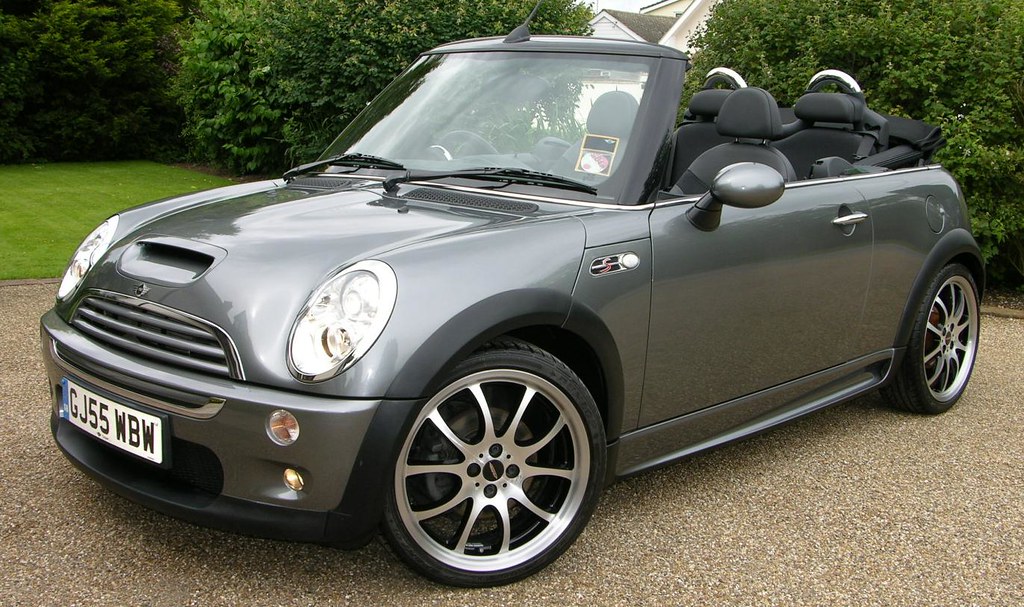
8. **Mini Cooper (2007–2015): The Cute Catastrophe**Few cars on the road boast the sheer personality and undeniable charm of the Mini Cooper, especially the second-generation models produced from 2007 to 2015. With their iconic retro styling, distinctively go-kart-like handling, and surprisingly upscale interiors, these compact vehicles attract a legion of buyers looking for a fun, premium, and unique driving experience. However, beneath that undeniably cute facade and playful advertising, mechanics will quickly tell you a different, far less charming story: these Minis are renowned for being catastrophically unreliable in the long run.
The most egregious and widely reported issues stem directly from the turbocharged 1.6L engine, which was prominently featured in the Cooper S and John Cooper Works (JCW) models. This engine, while spirited, is unfortunately a hotbed of serious and recurring problems. Common complaints include excessive carbon buildup on the intake valves, notorious timing chain tensioner failures that can lead to catastrophic engine damage, and widespread water pump leaks. Adding to the list are thermostat housing cracks, which further compromise the cooling system’s integrity.
Much like the BMW 3 Series, the timing of these failures is particularly disheartening for owners. Many of these critical engine issues often manifest well before the car reaches 80,000 miles, consistently leading to repairs that are not only expensive but can frequently exceed the vehicle’s actual resale value. This makes the Mini Cooper a classic example of a high-maintenance car cleverly disguised by its fun-loving and whimsical image. The problems don’t stop at the engine either.
Transmission issues, particularly with the continuously variable transmission (CVT) automatics found in earlier base models, are a known weak spot, often leading to unpredictable shifting and premature failure. Even manual transmission models aren’t entirely exempt, frequently suffering from clutch problems. Electrical glitches, ranging from power lock malfunctions to infotainment system bugs, are also frustratingly common. Mechanics regularly caution buyers away from used Minis, unless they are dedicated hobbyists with a penchant for DIY wrenching or have substantial budgets specifically earmarked for frequent and costly shop visits, because these cars are complex, tightly packaged, and inherently difficult to work on, making labor-intensive repairs even pricier.
Car Model Information: 2021 MINI John Cooper Works GP John Cooper Works
Categories: All set index articles, Articles with short description, Set index articles on cars, Short description is different from Wikidata
Summary: Mini Cooper may refer to:
Performance Cars of the original Mini series with uprated drive train and brakes, called the “Mini Cooper”, made by the British Motor Corporation and also the successors 1961–1971, and 1990–2000
Cars of the Mini (marque), including several different models produced by BMW since 2000 with the “Mini Cooper” title:
Mini Hatch, introduced in early 2000, second generation from 2006, third generation from 2014, and fourth generation from 2024, changing the model name to MINI Cooper.
Mini Clubman (2007–2024)
Mini Countryman
Mini Coupé (2011–2015) and Roadster (2012–2015)
Mini Paceman (2012–2016)
Mini Aceman
Get more information about: Mini Cooper
Buying a high-performing used car >>>
Brand: Mini Model: Cooper
Price: $37,950 Mileage: 22,122 mi.
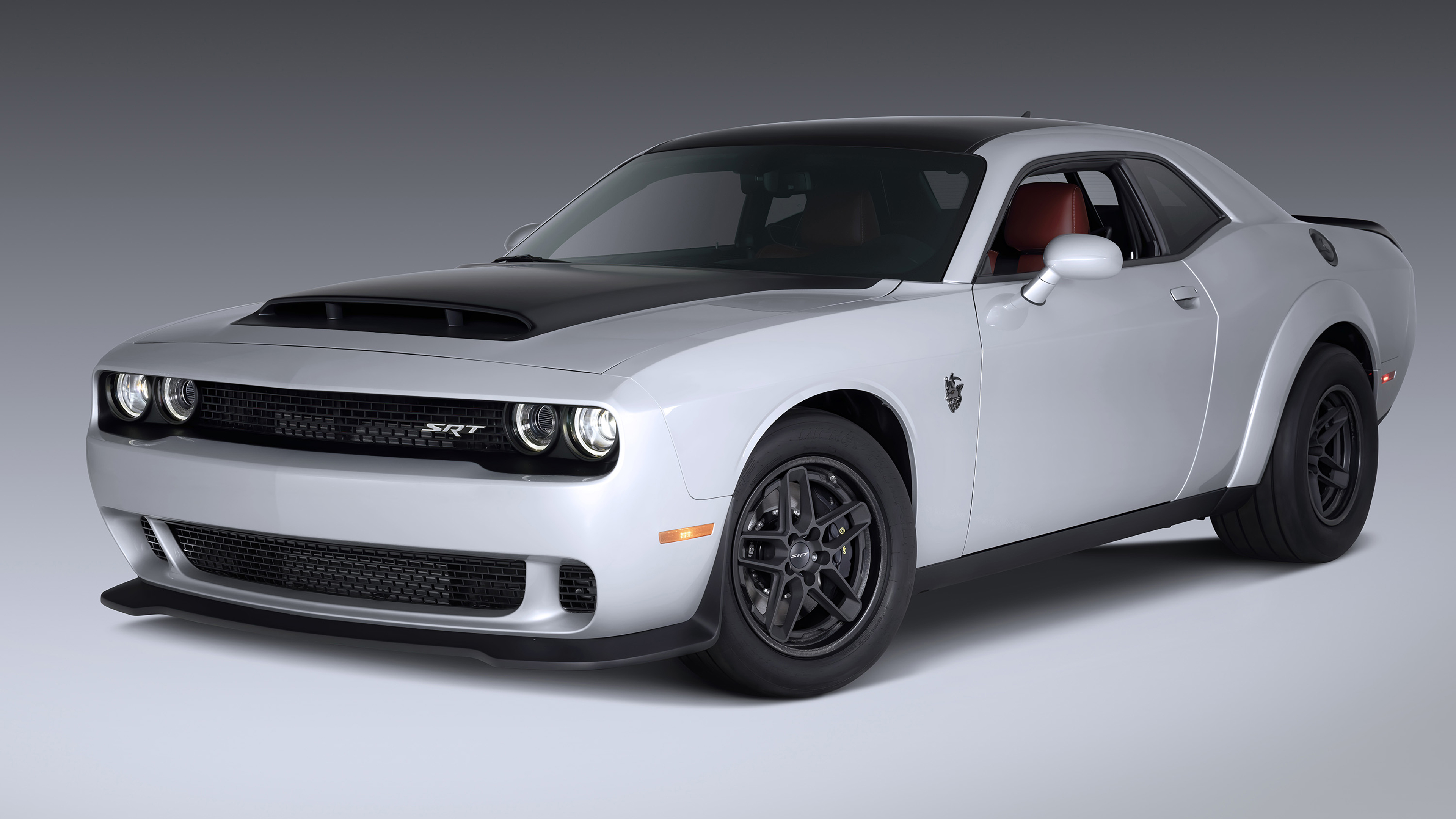
9. **Dodge Avenger (2008–2014): Muscle Car Looks, Mechanic’s Nightmare**At first glance, the Dodge Avenger from 2008 to 2014 presented a seemingly tempting package in the used car market. It boasted aggressive, masculine styling that hinted at muscle car heritage, combined with surprisingly roomy interiors, all wrapped up with an undeniably low price tag. It seemed like a lot of car for the money, especially for those seeking a bold statement on a budget. Yet, delve into the collective wisdom of experienced mechanics, and you’ll hear a unanimous chorus of advice: avoid it. Despite its tough-guy exterior, the Avenger consistently ranks among the most problematic midsize sedans of its era, becoming a regular, unwelcome fixture in repair shops.
One of the most significant and frequent sources of contention with the Avenger is rooted deeply under its hood. The base 2.4L four-cylinder “World Engine” gained a notorious reputation for excessive oil consumption, which often led to overheating issues and premature head gasket failures. If that wasn’t enough to deter buyers, the optional 2.7L V6 engine fared even worse, plagued by severe sludge buildup problems that could, and often did, outright kill the engine well before the 100,000-mile mark. Even the theoretically more reliable 3.6L Pentastar V6, introduced later, wasn’t entirely immune, occasionally suffering from rocker arm ticking and electronic throttle body malfunctions.
We are highlighting the Dodge Avenger here precisely because it embodies a mechanic’s nightmare, not just for the frequency of its repairs, but for the sheer variety of problems it presents. Transmission issues are another major complaint, with many owners reporting rough shifting and early failures, particularly in the older 4-speed automatic units. Beyond the powertrain, weak suspension components frequently give out prematurely, leading to poor handling and expensive replacements. Furthermore, the subpar interior quality often deteriorates rapidly, adding to the overall sense that this car simply wasn’t built for the long haul.
Mechanics often describe the Avenger as a vehicle that “wasn’t built to last.” This isn’t just about the cost of repairs; it’s the consistent and frustrating pattern of failures across multiple systems that makes the Avenger such an incredibly risky proposition for used car buyers. Even what should be basic repairs, such as replacing an alternator or a water pump, can become unnecessarily labor-intensive due to cramped engine bay design. If you are in the market for a dependable, affordable used sedan, there are countless superior choices available. The Avenger might project a bold image, but underneath, mechanics will tell you, it’s all trouble.
Car Model Information: 1970 Dodge Challenger Base
Name: Dodge Avenger
Caption: 2012 Dodge Avenger sedan
Class: Sport compact,Mid-size car
Manufacturer: Dodge
Production: 1994–2000,2007–2014
ModelYears: 1995–2000,2008–2014
Successor: Chrysler 200,Dodge Dart (PF)
Categories: 2000s cars, 2010s cars, All articles with dead external links, Articles with dead external links from April 2015, Articles with short description
Summary: The Dodge Avenger is a front-wheel drive, mid-sized sedan that was marketed by Dodge. The Avenger made its North American debut in 1994 for the 1995 model year as a coupe that was produced until 2000. The model name was reintroduced to the market as a four-door sedan in 2007 for the 2008 model year. The Dodge Avenger name was used on the South African market Hillman Avengers in 1975 and 1976.
The 2014 model year marked the end of Avenger production as the mid-sized models for both the Dodge and Chrysler brands were consolidated into the new Chrysler 200 introduced for the 2015 model year while Dodge received the new compact Dart.
Get more information about: Dodge Avenger
Buying a high-performing used car >>>
Brand: Dodge Model: Avenger
Price: $59,999 Mileage: 46,457 mi.

10. **Fiat 500 (2012–2017): Quirky Charm, Costly Consequences**When the Fiat 500 made its triumphant return to the U.S. market, it did so with an undeniable flourish of quirky Italian charm, adorably compact city-friendly dimensions, and a distinctively retro design that effortlessly stood out from the sea of conventional vehicles. It was positioned as a fun, stylish, and economical choice for urban dwellers and those seeking a car with genuine personality. However, beneath that undeniably cute styling and the playful advertising campaigns, the reality was starkly different: the Fiat 500 quickly became a frequent flyer at repair shops, cementing its reputation among mechanics as shorthand for “avoid at all costs,” especially models from 2012 to 2017.
The most significant and pervasive issue with the Fiat 500 lies squarely in its overall build quality and long-term reliability. The 1.4L MultiAir engine, while small and fuel-efficient, proved to be notoriously finicky and lacked the robust design needed for long-term durability. Owners and mechanics frequently report a litany of engine woes, including persistent oil leaks, recurring valve actuator issues that affect performance, and an alarming frequency of ‘check engine’ lights illuminating for various ailments. This engine, despite its efficiency, was simply not built to withstand the rigors of extended ownership without significant intervention.
The problems extend far beyond the engine. The automatic transmission, particularly the dual-clutch automatic found in the larger 500L models, is notorious for its harsh shifts, hesitation, and a tendency for early failure, often leading to very expensive replacements. Even the manual transmission models aren’t entirely immune, with frequent reports of clutch problems. Beyond the powertrain, the interior trim of the Fiat 500 often falls apart quickly, electrical systems glitch with frustrating regularity, and suspension components wear out well before they should, compromising ride quality and safety.
Adding insult to injury, mechanics often find that parts for the Fiat 500 can be surprisingly hard to find, and when they are available, they are often labor-intensive to install. This combination dramatically drives up repair bills, turning what seemed like an affordable used option into a significant financial burden. Many shops even express reluctance to work on them due to inconsistent parts availability, peculiar design quirks, and the general unreliability. While the Fiat 500’s charming personality might win your heart on a test drive, mechanics will tell you that it’s a car that was never meant to age gracefully, proving to be charming but exceptionally costly in the long run.
Car Model Information: 2013 FIAT 500 Abarth
Name: Fiat 500
Caption: 1970 Fiat 500 L
Aka: Puch 500
Manufacturer: Fiat Automobiles
Production: 1957–1975,3,893,294 units
Assembly: Turin,Desio
Designer: Dante Giacosa
Class: City car
BodyStyle: ubl
Layout: Rear-engine, rear-wheel drive layout
Doors: Suicide door,Car door#Conventional
Related: Autobianchi Bianchina,NSU/Fiat Weinsberg 500,Vignale Gamine,Autobianchi Giardiniera
Engine: Cubic centimetre,499 cc I2,594 cc I2
Transmission: Manual transmission
Wheelbase: {{convert,1840,mm,in,1,abbr=on
Abbr: on
Length: 2970 mm
Width: 1320 mm
Height: 1320 mm
Weight: 499 kg
Predecessor: Fiat 500 “Topolino”
Successor: Fiat 126,Fiat 500 (2007)
Sp: uk
Categories: 1960s cars, 1970s cars, All Wikipedia articles written in British English, All articles with unsourced statements, Articles containing Italian-language text
Summary: The Fiat 500 (Italian: Cinquecento, pronounced [ˌtʃiŋkweˈtʃɛnto]) is an economy / city car that was manufactured and marketed by Fiat Automobiles from 1957 until 1975. It was sold as a two-door semi-convertible or saloon car and as a three-door panel van or estate car.
Launched as the Nuova (new) 500 in July 1957, as a successor to the 500 “Topolino”, it was an inexpensive and practical small car. Measuring 2.97 metres (9 feet 9 inches) long, and originally powered by a rear-mounted 479 cc two-cylinder, air-cooled engine, the 500 was 24.5 centimetres (9.6 inches) smaller than Fiat’s 600, launched two years earlier, and is considered one of the first purpose-designed city cars.
In 1959, Dante Giacosa received a Compasso d’Oro industrial design prize for the Fiat 500. This marked the first time a Compasso d’Oro was awarded to an automotive manufacturer.
Get more information about: Fiat 500
Buying a high-performing used car >>>
Brand: Fiat Model: 500
Price: $11,995 Mileage: 35,154 mi.
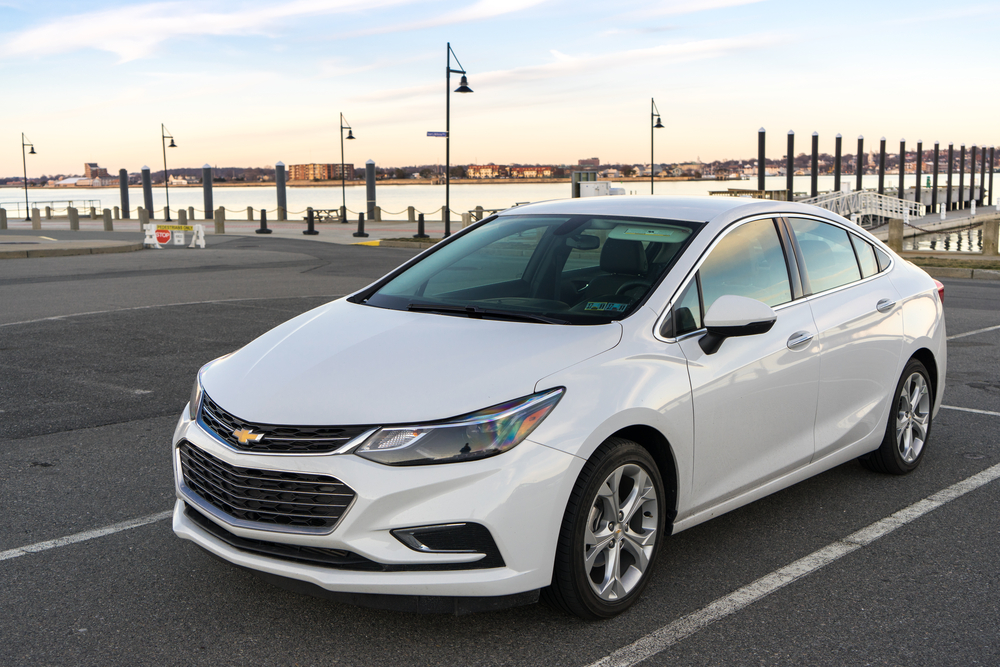
11. **Chevrolet Cruze (2011–2016): The Cooling System Catastrophe**The Chevrolet Cruze was General Motors’ ambitious answer to the highly successful global compact sedans from Honda and Toyota, designed to be a stylish, efficient, and competitive alternative to rivals like the Civic and Corolla. It aimed to offer a modern aesthetic and practical appeal to a broad audience. However, it’s the early models, specifically those produced from 2011 to 2016, that have earned a particularly poor reputation among mechanics. This generation of the Cruze is infamous for a long and frustrating list of reliability concerns and premature failures, making it a deceptive choice for used car buyers.
The primary culprit behind the Cruze’s notorious unreliability is undeniably its 1.4L turbocharged engine. This powerplant has gained an unenviable reputation for a multitude of common and expensive issues. Mechanics frequently encounter pervasive coolant leaks, engines prone to overheating, the dreaded blown head gaskets, and failed water pumps. What’s particularly alarming is that many of these significant problems can begin to manifest as early as 60,000 to 80,000 miles, long before many owners expect major engine work. The faulty thermostat housing and fragile plastic coolant system components are cited as exceptionally frequent failure points, leading many mechanics to describe the Cruze as a “cooling system disaster.”
Unfortunately, the problems don’t stop with the cooling system or the engine. Transmission troubles, particularly with the 6-speed automatic unit, further compound the headaches for owners. Reports of hard shifting and early transmission failures are far from uncommon, and the costs associated with transmission replacements can be substantial, often eclipsing the car’s market value. Beyond the major mechanical components, the Cruze also suffers from subpar interior build quality, which tends to degrade rapidly over time, and a problematic tendency for rapid depreciation, eroding any potential resale value.
Adding to the list of woes are costly electrical problems that can be difficult to diagnose and repair. Mechanics often see these cars return for recurring issues such as turbo failures, persistent oil leaks, and an incessant illumination of the ‘check engine’ light. For professionals in the automotive repair industry, the early-generation Cruze is a car that reliably generates return visits, but for all the wrong reasons. While newer iterations of the Cruze did see some improvements, the 2011–2016 models were, by most accounts, a mess. For used car buyers hoping to avoid major repairs and financial strain, mechanics unequivocally suggest skipping this particular gamble.
So there you have it, folks. We’ve peeled back the layers, gotten our hands dirty, and delivered a no-holds-barred look at the vehicles that either earn a mechanic’s silent respect or their exasperated sigh. This isn’t just about what’s affordable upfront; it’s about the true, long-term cost of ownership—the peace of mind that comes from knowing your ride won’t leave you stranded on the side of the road or drain your emergency fund for the third time this year. When you’re next staring down a used car lot, remember these insider insights. Because in the world of wrenches, oil, and endless diagnostics, some cars are undeniably built to last, and others, well, they’re just built to keep the repair shops perpetually busy. Choose wisely, drive confidently, and maybe, just maybe, you’ll avoid becoming another mechanic’s cautionary tale.


